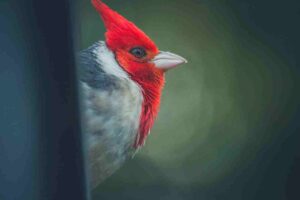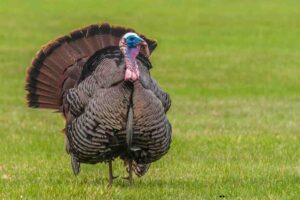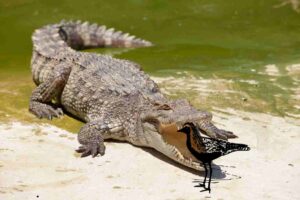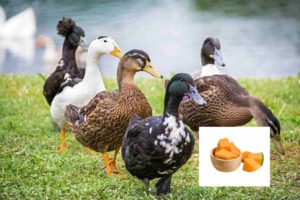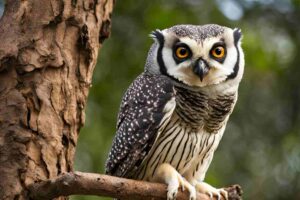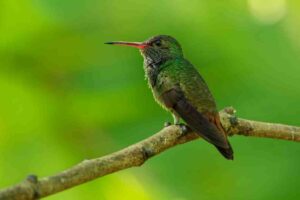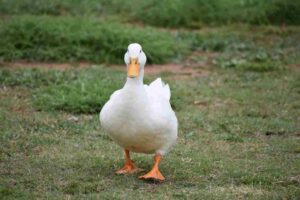The green winged teal duck is a captivating species known for its striking appearance and intriguing behaviors. This article delves into various aspects of the green-winged teal, including its physical characteristics, habitat, behavior, and more. Whether you are a birdwatcher, nature enthusiast, or simply curious about this beautiful duck, you’ll find valuable information here.
Green Winged Teal Duck

The green-winged teal (Anas crecca) is a small dabbling duck found across North America, Europe, and Asia. Recognized for its distinctive green wing patches and intricate plumage, this species is a delight to observe and plays an integral role in wetland ecosystems. For more information on ducks, check out this comprehensive guide on the Northern Pintail duckling.
Physical Characteristics
The green winged teal duck measures about 13-15 inches in length, making it one of the smaller duck species. Males, known as drakes, exhibit a striking green patch on their wings, along with a chestnut-brown head and white vertical stripe on their flanks. Females are more subdued in color, featuring mottled brown plumage that provides excellent camouflage.
Female Green Winged Teal: A Closer Look

Green Winged Teal Female
The female green-winged teal is often overshadowed by the vibrant male. She has a more cryptic coloration, which helps her blend into her surroundings, especially during nesting. Females are typically larger than males and are responsible for building nests and caring for the young.
Green Winged Teal Hen
The term “hen” refers specifically to female ducks. The green-winged teal hen is known for her nurturing behavior and often leads her ducklings to water shortly after they hatch. Her ability to camouflage is crucial for protecting her young from predators.3. Behavior and Habitat of the Green-Winged Teal
Green Winged Teal Habitat Medium
Green-winged teals thrive in a variety of wetland habitats, including marshes, ponds, and lakes. They prefer areas with abundant vegetation, which provides food and shelter. These ducks are known to forage for seeds, aquatic plants, and small invertebrates.
Green Winged Teal Flying
The green-winged teal flying showcases their agility and speed. They are strong fliers, capable of reaching speeds up to 40 miles per hour. Their migratory patterns often take them to warmer climates during the winter months, making them a common sight in many regions.
Drake Green Winged Teal: The Male’s Role
Male Green Winged Teal
The male green-winged teal is not only visually striking but also plays a vital role in courtship. Males engage in elaborate displays to attract females, often puffing out their chests and performing a series of vocalizations.
Green Winged Teal Drake
The term “drake” specifically refers to male ducks. The drake green-winged teal is known for its vibrant plumage, which changes slightly between the breeding and non-breeding seasons. During the breeding season, the male’s colors become more pronounced, making them easier to spot. For more information on ducks, check out this comprehensive guide on ducks with red heads.
Blue Winged Teal vs Green Winged Teal
Comparison of Species
The blue-winged teal vs. green-winged teal is a common comparison among birdwatchers. While both species share similar habitats and behaviors, the blue-winged teal can be distinguished by its blue wing patch and slightly larger size. Understanding these differences is essential for avid birdwatchers.
American Green Winged Teal
Distribution and Habitat
The American green-winged teal is a North American subspecies that migrates to the southern United States and Mexico during winter months. Their adaptability to various wetland habitats makes them a resilient species.
Green-Winged Teal Size and Dimensions
Average Size
The green-winged teal size varies slightly between males and females. Males typically weigh between 14-23 ounces, while females weigh around 15-21 ounces. Their small size allows them to maneuver easily through dense vegetation.
Eurasian Teal vs Green-Winged Teal
Identifying Features
The eurasian teal vs green-winged teal distinction is another interesting aspect for bird enthusiasts. The Eurasian teal is slightly larger and has different coloration patterns. However, both species share similar habitats and behaviors.
Green-Winged Teal in Flight
Observation Tips
Observing green-winged teal in flight can be a breathtaking experience. Their agile flying abilities make them difficult to catch, but with patience, birdwatchers can witness their stunning aerial displays.
Green-Winged Teal Male and Female: A Comparison
Distinguishing Characteristics
Understanding the differences between green-winged teal male and female is vital for identification. Males are colorful and eye-catching, while females are more muted, designed for concealment during nesting.
Artistic Representations: Green-Winged Teal Drawing
Capturing Beauty
Many artists and wildlife enthusiasts enjoy creating green-winged teal drawings to celebrate this species. Their intricate plumage and graceful forms make them a popular subject for artists.
The Green-Winged Teal Wing: Anatomy and Function
Wing Structure
The green-winged teal wing is an essential feature, allowing these ducks to fly efficiently. Their wings are perfectly adapted for quick takeoffs and agile maneuvers in the air.
Conclusion
The green-winged teal duck is a remarkable species that captivates bird enthusiasts and casual observers alike. With its striking colors, interesting behaviors, and adaptability to various habitats, it plays a vital role in the ecosystem. Understanding the nuances of this species—from the physical characteristics of the male and female to their migratory patterns—enhances our appreciation of these beautiful birds.
FAQs
What is the habitat of the green-winged teal?
Green-winged teals prefer wetland habitats, including marshes, ponds, and lakes, where they can find food and shelter.
How can I identify a male green-winged teal?
The male green-winged teal is easily recognized by its vibrant green head and chestnut-brown plumage, along with a distinctive white vertical stripe on its flanks.
Are green-winged teals migratory?
Yes, green-winged teals are migratory birds, traveling to warmer regions during the winter months.
What do green-winged teals eat?
Green-winged teals primarily feed on seeds, aquatic plants, and small invertebrates found in their wetland habitats.

